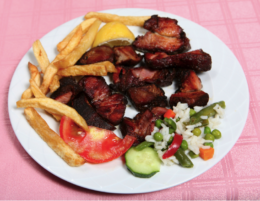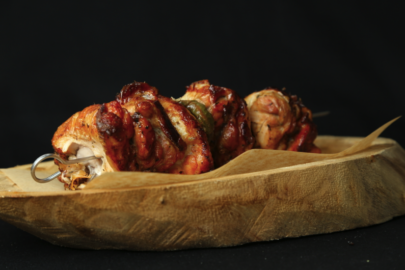Three Greek dishes feature in the list published by Taste Atlas of the 50 best pork recipes in the world, with one of them in the top 10.
The first place on the list published by the Taste Atlas Instagram account, which is a pork lover’s dream, is the Colombian Lechona, a pig stuffed with onions, peas, rice and fresh herbs, roasted whole.
View this post on Instagram
The first Greek recipe on the list, which comes in eighth place, is kontosouvli. It is described on the site as a traditional dish of our country, consisting of large pieces of pork marinated in a mixture of herbs and spices, which are then roasted on a spit, like gyros or souvlaki.
“The marinade often contains ingredients such as garlic, oregano, thyme, rosemary, paprika, olive oil, lemon juice and red wine. Once marinated, the meat is placed on a large spit and cooked over an open flame, resulting in a rich and flavourful outer crust, while the inside remains juicy and tender.”

A little further down, in 11th place on the list, we find the gournopoula. Gournopoula or gournopoulo is a traditional Greek dish that originated in Messinia and is particularly popular in Kalamata.
The piglet is placed on the spit and a mixture of salt and oregano is placed in its belly. The belly is sewn and the piglet is roasted over a high heat for about ten hours.
When the roasting is complete, the piglet will be half its weight, but no one will complain as the meat will be sweet and the skin crispy. The dish dates back to the time of the Turkish occupation,’ says the Taste Atlas description.

The last Greek dish on the list of the top 50 pork recipes is pork apaki, ranked 32nd. It is described by the site as a Cretan delicacy usually made from salted pork tenderloin, which is smoked with a combination of wood and various herbs such as oregano, marjoram, thyme or sage.
Vanity Fair and Conde Nast Traveller recommend Ios island for the summer
“It is believed that this method of preparation dates back to Byzantine times, when people used it to preserve the meat for a longer period of time,” the description continues: “Although usually eaten as a snack, cut into thin strips, apaki is easily incorporated into omelets or salads, and can also be cooked short and combined with pasta or rice.”
Ask me anything
Explore related questions





